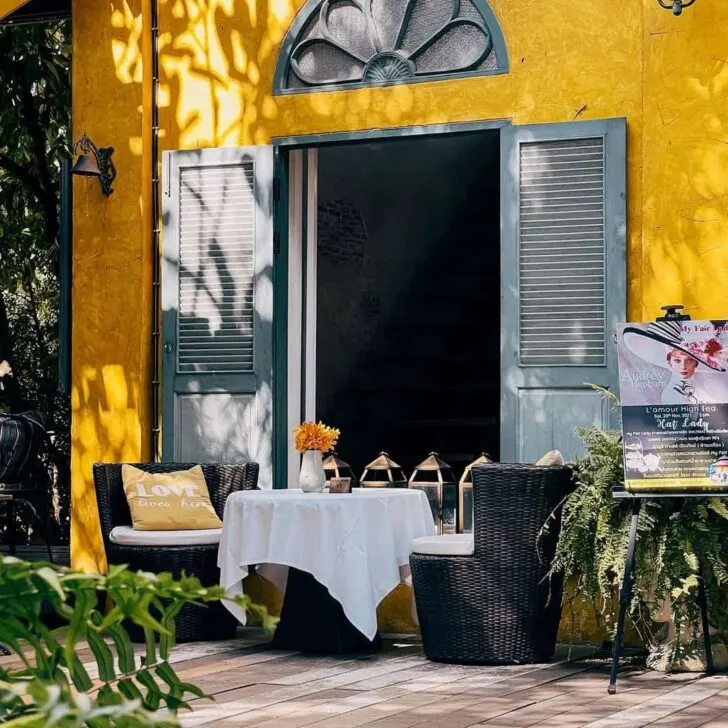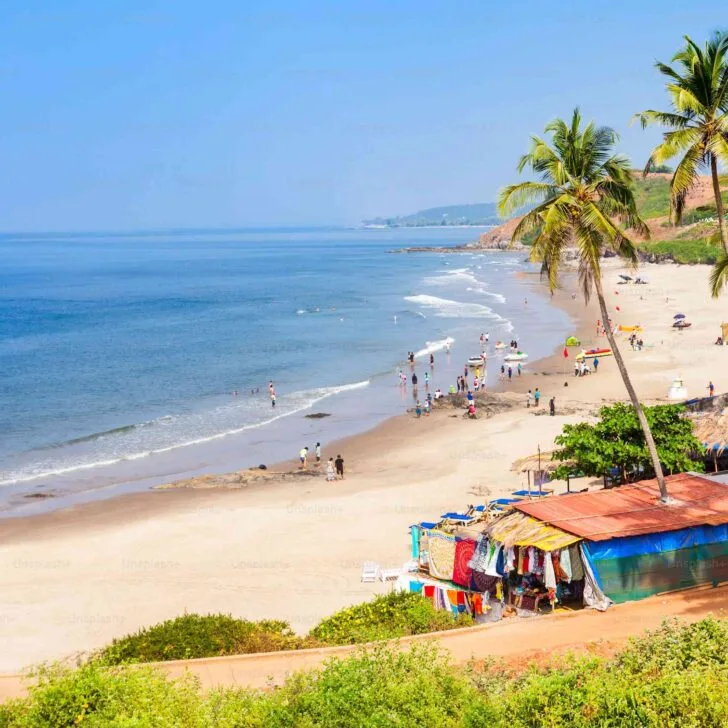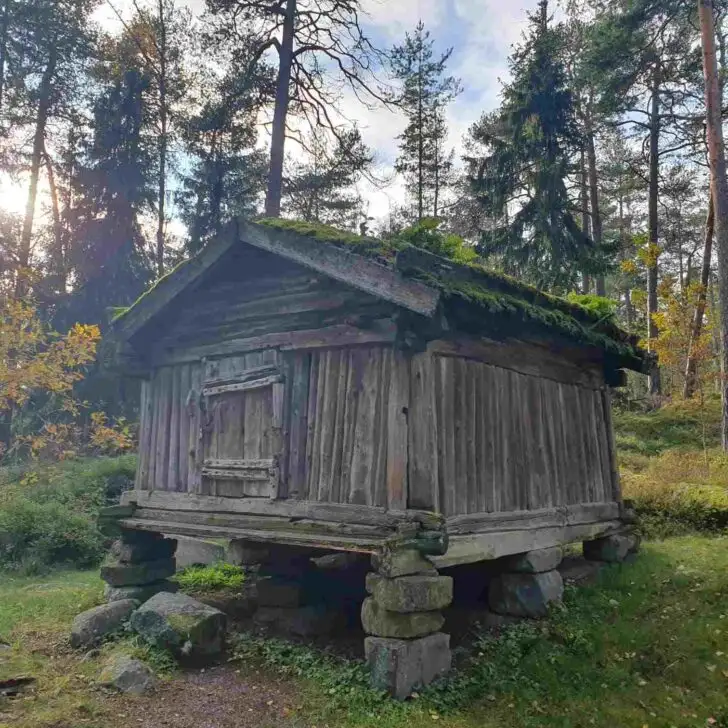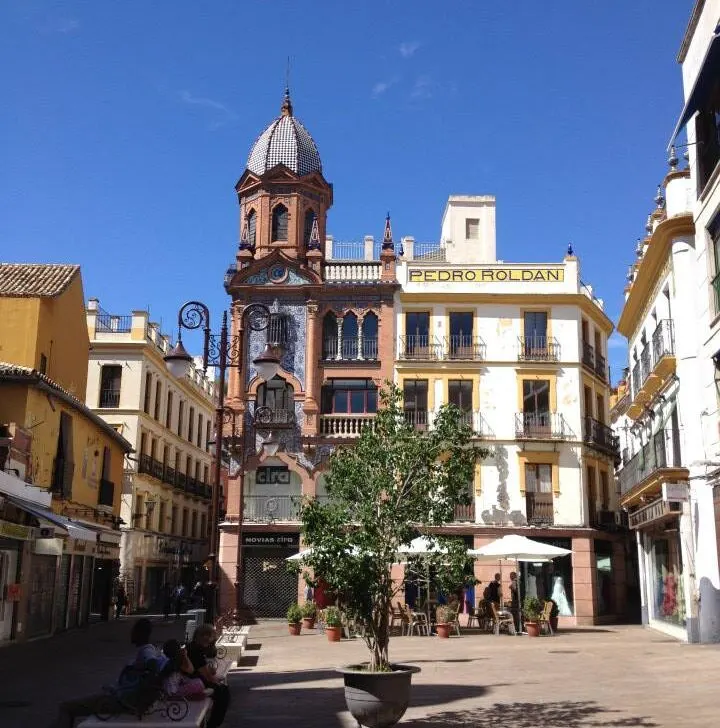We may receive a commission if you make purchases through affiliate links (at no extra cost to you). Read why our approach to travel is different.
Separated from the Lower 48 by over 1,000 miles of Canada, and closer to Russia than Washington DC, Alaska is the United States like you’ve never seen it before. With snow-capped peaks, glaciers the size of states, crystal clear lakes and thousands of miles of wilderness, Alaska really is otherworldly – and this 7 day Alaska itinerary will take you to the other world.
Add in the wildlife – eagles, bears, moose and orcas to name just a few – centuries of epic history and locals who will welcome you with open arms, visiting Alaska is a must for every traveler. Sure, it takes a while to get there, and it’s certainly not a cheap getaway, but a journey to the 49th State is a trip of a lifetime that will leave you awe-struck.

Covering over 665,000 square miles, you could spend a lifetime in Alaska and still not see all of it. When it comes to visiting, it’s always hard to decide how long to stay. We’ll be honest: however long you decide on, it will never be enough. That said, 7 days is a good amount of time to get a feel for Alaska and see the best it has to offer. Our 7 Day Alaska Itinerary packs in all of Alaska’s ultimate destinations. However, with more time up your sleeve there’s endless sights to explore in Alaska – including the USA’s closest city to the North Pole.
Skip to...
When is the best time to visit Alaska?
Being so far north (the north of Alaska is within the Arctic Circle) winters are harsh. Temperatures plumet as low as -35°C (-31°F) and heavy snowfall can cause travel disruption, especially outside of major cities.

Unless you’re set on visiting Alaska to search for the Northern Lights, summer is the best time to visit Alaska. The main season runs from May to September, with July and August being the most popular (and busiest) months to visit.
Such a short season does have its drawbacks. If you’re able to travel to Alaska in the shoulder months (May, June and September), you’ll benefit from lower hotel prices and enjoy the sights with fewer tourists around.
Getting to Alaska
By air
By far the quickest and easiest way to reach the 49th State is by air. Alaska Airlines operates year round flights to Ketchikan, Juneau and Anchorage from Seattle-Tacoma. Delta, United and American also offer a number of seasonal services from the Lower 48, whilst Air Canada provides flights to Vancouver.
If you’re coming from Europe, German airline Condor flies seasonally from Frankfurt to Anchorage and Fairbanks.

By sea
Cruise ship
Cruises are a popular way of exploring Alaska’s south-eastern coastline. Many stop off in some of Alaska’s top destinations, including Anchorage, Juneau, Sitka and Ketchikan.
If you come by cruise, leave a few days at the start of end of your trip to visit some of the more off-the-beaten-track destinations in our 7 day Alaska itinerary.
Ferry
The Alaska Marine Highway is a cheaper, and more authentic, alternative to a cruise. With ferries covering over 3,500 miles of coastline, this is another great way to reach Alaska and see the sights along the way.
Ferries connect all major (and some smaller) Alaskan towns and cities as well as connecting Alaska with the Lower 48. If you’re using the Marine Highway to get to Alaska, you’ll embark in Bellingham, Washington. From there, the ferry takes around two days to reach Ketchikan and three days to Juneau.

7 Day Alaska Itinerary
Our ultimate 7 day Alaska itinerary runs from south to north, but works just as well in reverse.
Day 1: Ketchikan
Alaska’s first city, Ketchikan sits just 60 miles from the Canadian border. The first stop on the Alaska Marine Highway from Bellingham, and with several daily flights from Seattle, Ketchikan is the easiest place in Alaska to reach from the Lower 48.

The best way to see all of Ketchikan’s top sights in one day is to take a guided tour. Take a trip to Saxman Native Village and learn about the city’s history or amble along Creek Street whilst hearing tales from local fisherman.
Creek Street
If you do an internet search for Ketchikan, the first image you’ll see will be of Creek Street. Ketchikan’s most famous street, this quirky boardwalk perched above Ketchikan Creek has a colorful history. Dubbed the spot that “both men and salmon swam upstream to spawn,” Creek Street earned its fame as the city’s red light district.

Totem Poles
Ketchikan has the world’s largest collection of totem poles, many of which are on display at the Totem Heritage Center. This unique museum explains the history of the poles, first used by native Americans to record their family lineage. Bright State Park and Saxman Native Village are also well worth a visit to see Totems and learn about the cultural heritage of the Tlingit people.

Day 2: Wrangell
Often overlooked by visitors to Alaska, and a port of call for only the smallest cruise ships, you really shouldn’t miss Wrangell. To put it simply, Wrangell is one of the most beautiful places on earth.

Fly from Ketchikan to Wrangell
Alaska Airlines flies once daily from Ketchikan to Wrangell at around 9:40 am as part of their ‘milk run’ service between Seattle and Anchorage. The flight is blocked at 42 minutes, but in reality, you’ll be in the air for less than 20 minutes.
Wrangell Airport isn’t served by public transport, but most accommodation providers will pick you up. Those that don’t will help you arrange a taxi.
Morning: Wrangell Museum
Wrangell Museum houses an impressive collection of artefacts documenting the history of Wrangell. Highlights include displays on Tlingit culture, Fort Wrangell and the history of aviation in the town. The museum’s gift shop has a book section which could rival Barnes & Noble.

Lunch: Nic’s Place
Simple, yet delicious, Nic’s Place is Wrangell’s only pizzeria (and one of the few places open for lunch). Freshly baked pizza is served by the slice or as a whole pie for remarkably cheap (by Alaskan standards) prices. You can dine in, but on a sunny day, grab your slice and head down to the water.

Afternoon: Petroglyph Beach & Mount Dewey
Wrangell’s natural beauty is its biggest draw and nothing beats an afternoon walk along the beach. Around a half-hour walk out of town along a flat paved road, Petroglyph Beach is a State Historical Site. With over 40 rock carvings dating back 8,000 years, a visit is a must when in Wrangell.

Heading back in to town from the beach, take the short trail leading up Mount Dewey. It’s a fairly easy hike and suitable for most ability levels. The trail leads up the lush, wooded mountainside to a viewing platform at the top from where you’ll get the best view of Wrangell.
Dinner: The Stikine Inn
Wrangell’s only hotel and only full service restaurant, ‘The Stik’ as it’s known locally is always busy. A hit with tourists and locals alike, on a summer’s evening there is no better place to be than on their terrace overlooking the Pacific.
The service is wonderful and the food is divine: their menu features everything from juicy burgers and steaks to fresh, local seafood accompanied by a strong wine list and local beers.

Day 3: Sitka
It was only in 1867 that Alaska became part of the United States. For over a hundred years before that, Alaska was owned by Russia, who made Sitka their capital, calling it New Archangel.
Travel tip: To get from Wrangell to Sitka by flight, you’ll need to connect in either Ketchikan or Juneau.
The connection in Ketchikan is far quicker and involves a much shorter transfer time.

Top sights in Sitka
To delve into Sitka’s Russian history, you only need to walk along the main street (Lincoln Street) to admire St Michael’s Cathedral. Built in 1966, long after the Russians had departed, it was designed to replicate the original cathedral in Sitka which was destroyed by fire. One look will tell you it would feel more at home in Red Square.
The Russian Bishop’s House, just along the waterfront from Lincoln Street, is built in classic colonial style. Completed in 1842, it was home to the Bishop who was responsible for the whole of Russian America and even parts of Siberia. Now owned by the U.S. National Park Service, free guided tours are offered every half hour from 9 am to 5 pm.

Around ten miles out of town, but well worth the trek (buses run Monday through Friday, taxis are also available), the Fortress of the Bear is unmissable. Funded purely by donations, the Fortress is an orphanage for bears whose mothers have been shot or died from human causes. A visit is the ideal opportunity to get up close with the famous Alaska natives – and you’ll be supporting a worthy course. It will be a highlight of your 7 day Alaska itinerary.
Travel tip: Combine your visit to Fortress of the Bear with a historical tour of Sitka.
Make sure you leave time for a stroll around the National Historical Park. The ocean views and woodland trails are serene. Cross the road from the park to stop by Harbor Mountain Brewing Company, a craft ale brewery which serve their delicious beers along with artisan pizza.
Days 4-5: Juneau
Juneau, Alaska’s stunning state capital, has to feature on every traveler’s bucket list. It is one of the absolute highlights of our 7 day Alaska itinerary. Hemmed in by mountains and the sea, with no road links to the outside world, Juneau is not only beautiful, but one of, if not the most, unusual state capitals.

Juneau is full of exciting things to do, fantastic restaurants and quirky hotels. We’ve covered them all in detail in our guide on how to spend one day in Juneau.
Top sights in Juneau
Wherever you look in Juneau, you won’t have to turn your head far to see the peak of Mount Roberts looming over you. Head to the top on the Mount Roberts Aerial Tramway to enjoy the view and learn more about Tlingit culture.
Also, be sure to pay a visit to the Alaska State Museum and the most northerly state capitol building in the U.S.

A little out of town, but a real must, is Mendenhall Glacier. You can take a trolley tour from downtown to get there easily.
Spend the remainder of your time in Juneau ambling along the waterfront taking in the serene views which come at you from all angles. When your legs need a break, there’s some excellent craft breweries and cocktail bars to relax in.
Day 6: Anchorage & Denali
Anchorage
Anchorage and Juneau couldn’t be more of a contrast. When you arrive from Juneau, your first impressions of Anchorage may well be a little disappointing. Alaska’s largest city certainly doesn’t have Juneau’s charm or charisma, but it’s a good stopping off place for a night before heading into the wilderness.

Travel tip: We suggest heading to Anchorage late in the afternoon of Day 5 to rest up for the night before an early start the next morning.
After a night at the Historic Anchorage Hotel, hands down the most welcoming spot in town, and a hearty dinner at Humpy’s Great Alaskan Ale House, you’ll be all set for another Alaska highlight: Denali.
Denali
If you fancy hiring a car in Anchorage, the drive through Denali is a scenic one and comes with the flexibility of stopping whenever and wherever you like. Many car rental companies will let you do a one-way hire from Anchorage to Fairbanks to save doubling back.

A slower, but more relaxing way of traveling through the National Park is to take the Alaska Railroad. Their Denali Star train runs every day between Anchorage and Fairbanks. Purchase a one-way ticket from Anchorage to Denali, then another for the following day from Denali to Fairbanks.
When you reach Denali, the station is right by the park’s visitor center, from where you can take tours of the National Park. Some of the best tours are an ATV trek through the park, a horse-drawn waggon ride and a walking tour with a naturalist.
Day 7: Fairbanks
The beautiful riverside city of Fairbanks, aptly nicknamed “Golden Heart City,” is the ideal place to end your Alaska adventure. With gorgeous scenery, leafy parks running along the river bank and a friendly, small town feel, Fairbanks really is golden at heart.

Top sights of Fairbanks
If you can draw yourself away from the parks, Aladdin’s cave-style antique shops and wonderful restaurants, Fairbanks has a few excellent attractions which are worth a visit.

The Fountainhead Antique Auto Museum is a must for any classic car enthusiast, whilst Fairbanks Ice Museum has a unique collection of ice sculptures. For get a more in-depth history of the region, head to the University of Alaska Museum of the North which tells the story of Alaskan people, wildlife and landscapes.
Share This Article

Traveling soon? Subscribe to The Insight below and get exclusive access to our personalized travel advice community via WhatsApp so you can ask all your burning travel questions.
Looking for the best comprehensive travel insurance? SafetyWing has you covered.
And for your eSIM in every country, there is only one option we recommend: Airalo.
Read more of our best insights from around the world






deccanspark
Wednesday 28th of August 2024
Absolutely loved your insights on hidden travel gems! Your recommendations are always spot on and make me want to pack my bags immediately!
Linda
Thursday 18th of July 2024
Just in time - saved this article for my upcoming trip in August!